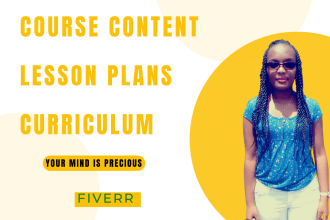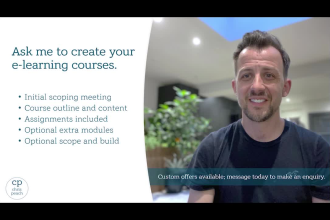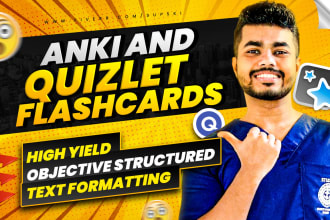Browse categories
eLearning Content Development
Delight your audience with engaging online course content.
|4,200+ Results
Sort by:

Level 2
I will create inspiring online course content for online courses
From $85
Offers video consultations
Fiverr’s
Choice
I will create online course content, course creation, elearning course on thinkific
From $10
Offers video consultations
eLearning Content Development FAQs
What is eLearning content development?
The development of eLearning content is key in order to populate your Learning Management System ( LMS) with relevant and engaging content to achieve your business’ learning & development goals by building skills and instilling company values in employees. The process of producing interactive web-based training involves discovery, creation and review using a number of authoring tools available for instructional designers in order to build compelling technical, soft skill or compliance training for learners throughout the organization.
What is course content?
Course content is defined as the totality of all elements comprising the eLearning which is to be delivered asynchronously online. It consists of informational materials such as reading, video, interactive quizzes or other assets. To build an online course you need to identify and organize in a coherent and dynamic structure these 3 main components - learning objectives, assessments and instructional strategies. Once this is done you can build the course structure and schedule with a teaching strategy that supports your goals.
What are the different types of eLearning content?
Learning content choice depends on your team size, subject matter and amount of information, business goals and audience’s prior knowledge. The most commonly used types are slide-based courses that can be combined with quizzes (knowledge assessments). Training videos and animations (standalone or embedded in a slide-based training or as part of a playlist), podcasts, eBooks and dialogue simulations are also gaining traction. Interactive videos, VR and AR as well as gamified simulations are becoming very popular to increase engagement.
What are the main steps in the eLearning content development process?
There are 7 main steps when developing eLearning Content. The first three - analysis, creating the Instructional Design Document and the Scripting (or storyboarding) are done before the actual creation takes place. Next is prototype development when the presentation of the content and all interactions, colors, images, and animations are finalized. In the following two steps the course is developed without audio and after stakeholder approval, audio is added if necessary. After final testing, the course is uploaded on the LMS.
What are the main advantages of eLearning?
eLearning consistently scores very high in employee engagement, satisfaction and longevity. For companies, one of the main benefits of eLearning is that it is extremely good value for money (compared to instructor-led) and it saves time for the organization and employees. It also achieves better knowledge retention and it’s more consistent than face-to-face courses by offering the same experience to all learners whilst simultaneously allowing for personalization and customization of the experience to learners’ individual needs and skill levels.
What does an instructional designer do?
An instructional designer blends the theory and research to create and publish learning materials that achieve the desired effect on the learner/s. The role of the instructional designer is key to achieving a smooth, coherent and successful learning process. Their job includes staying at the forefront of learning design and education, developing content for courses, programs and entire curricula, redesigning existing training materials, teaching manuals and how-to guides by using authoring tools and formats such as videos, animations, podcasts, interactive elements.





















